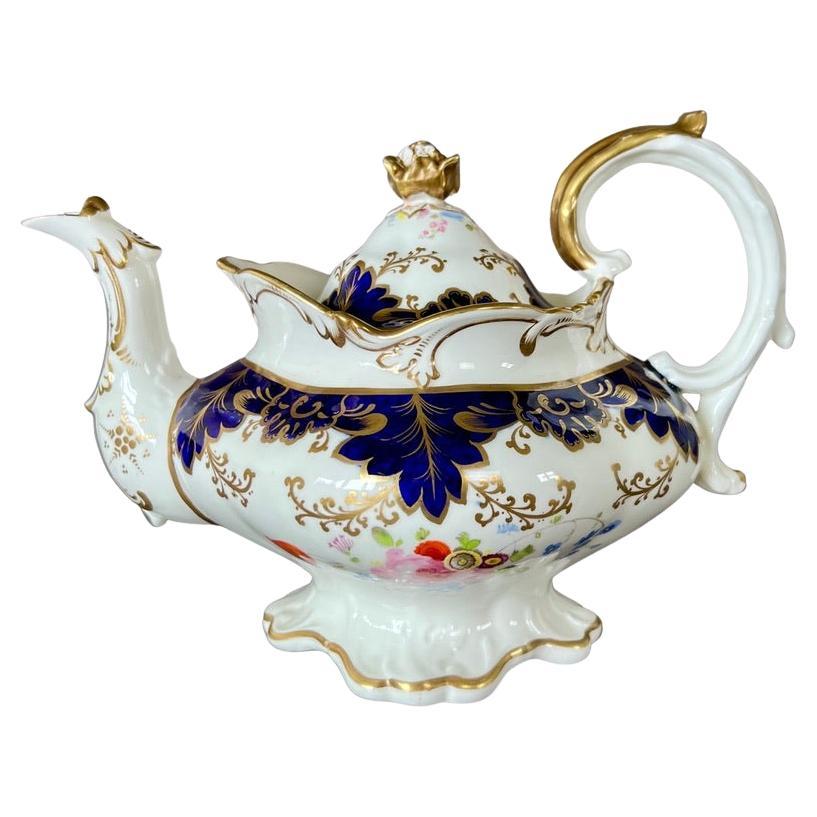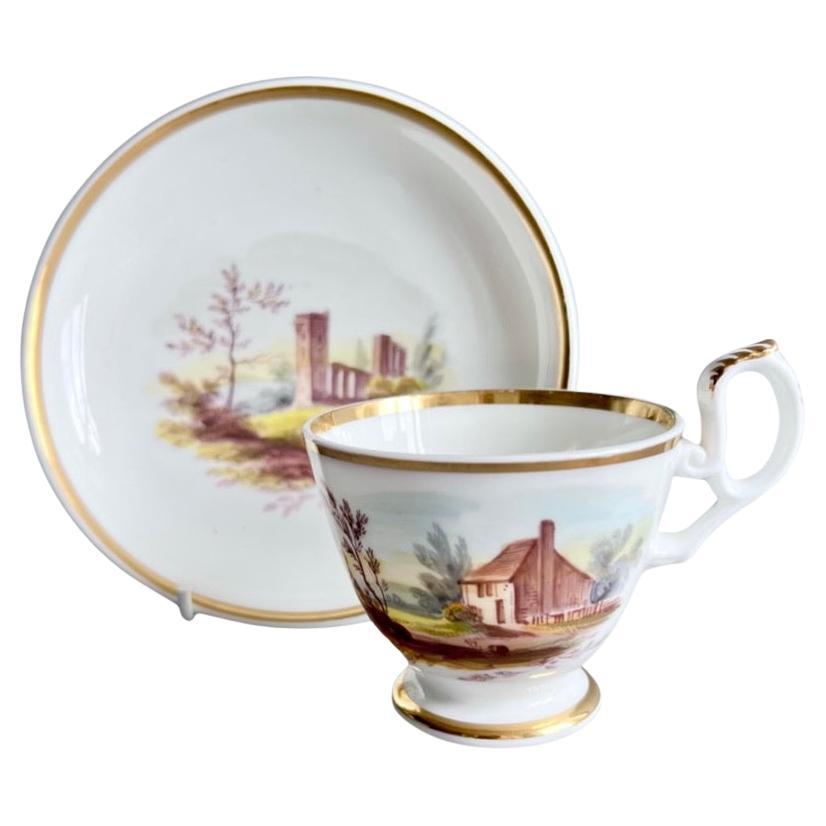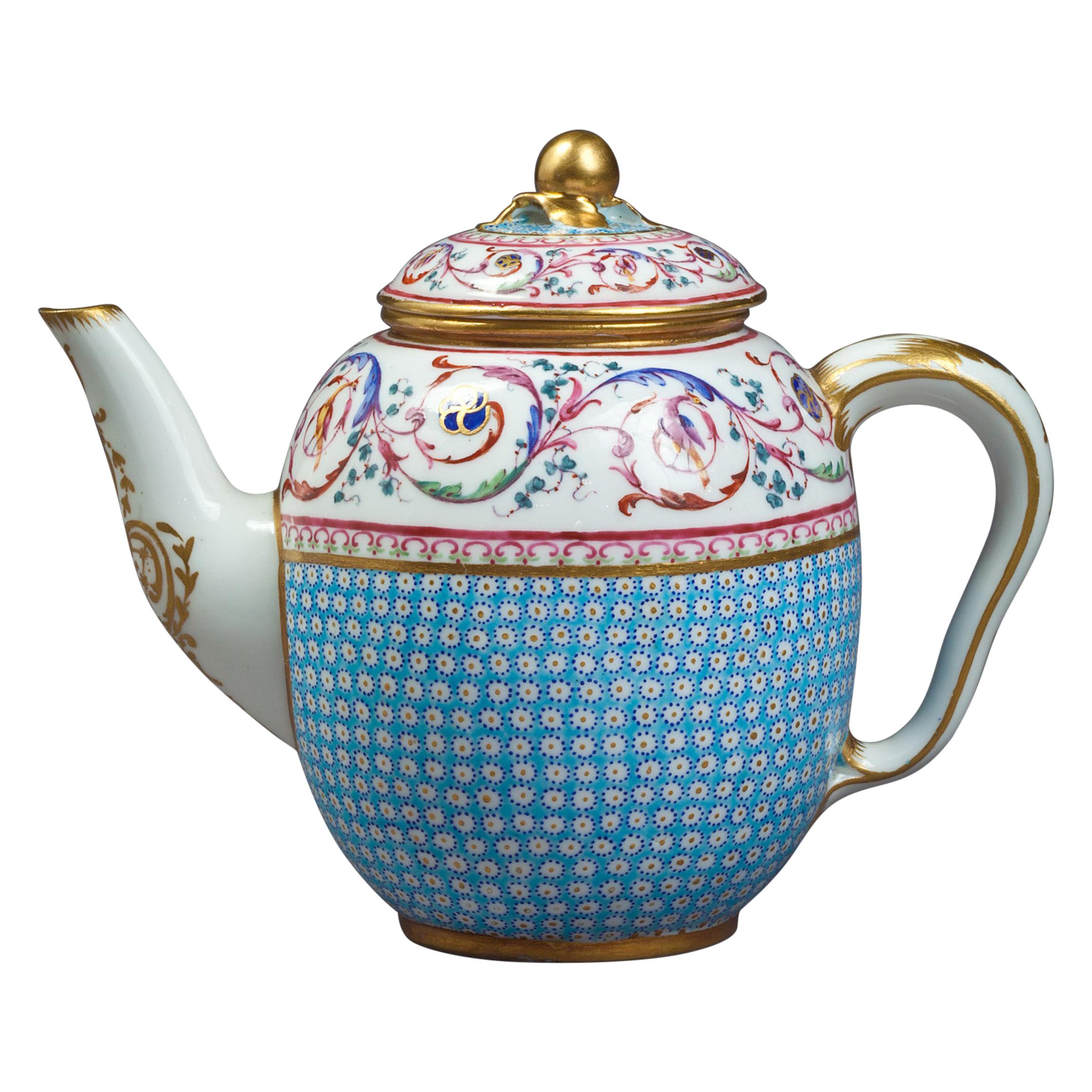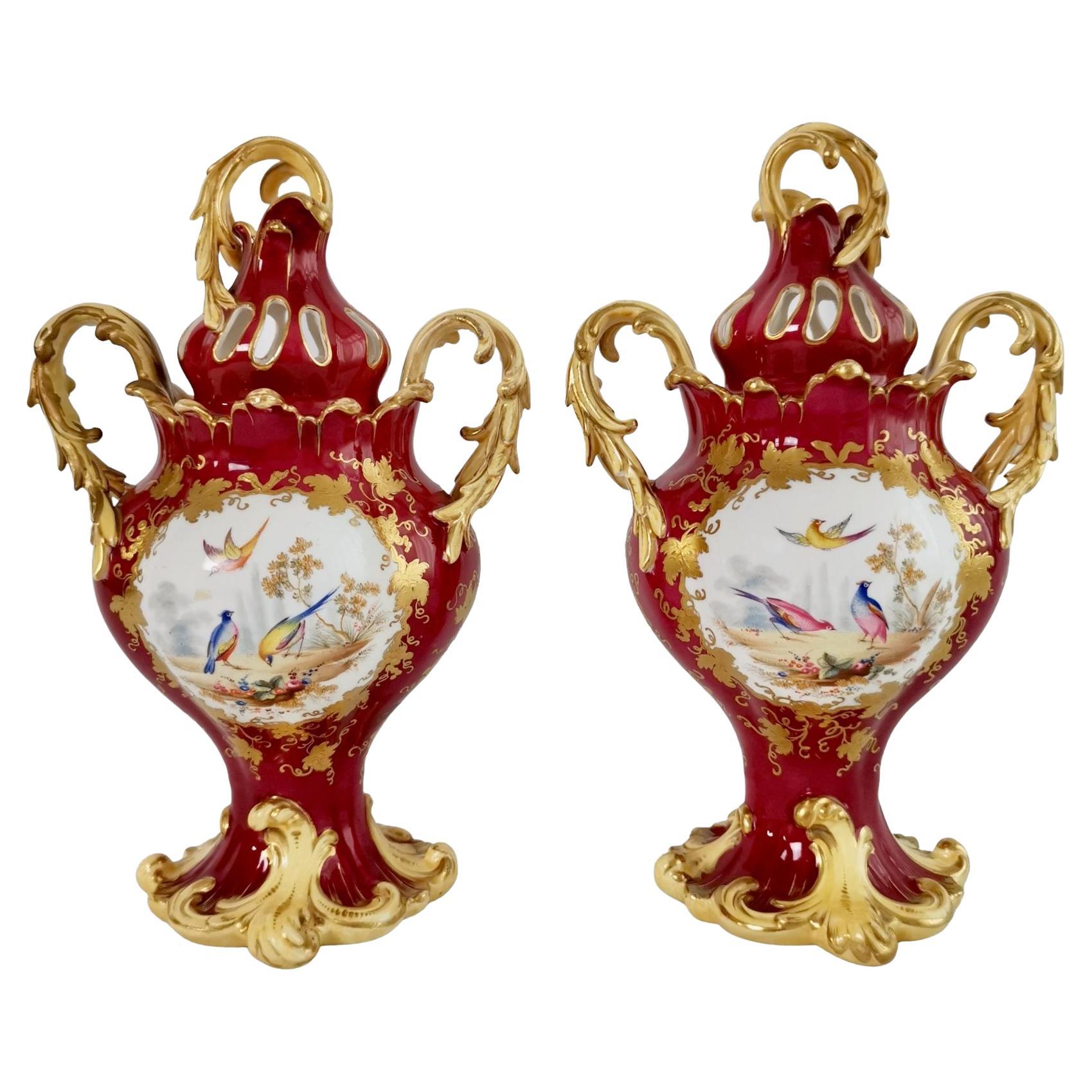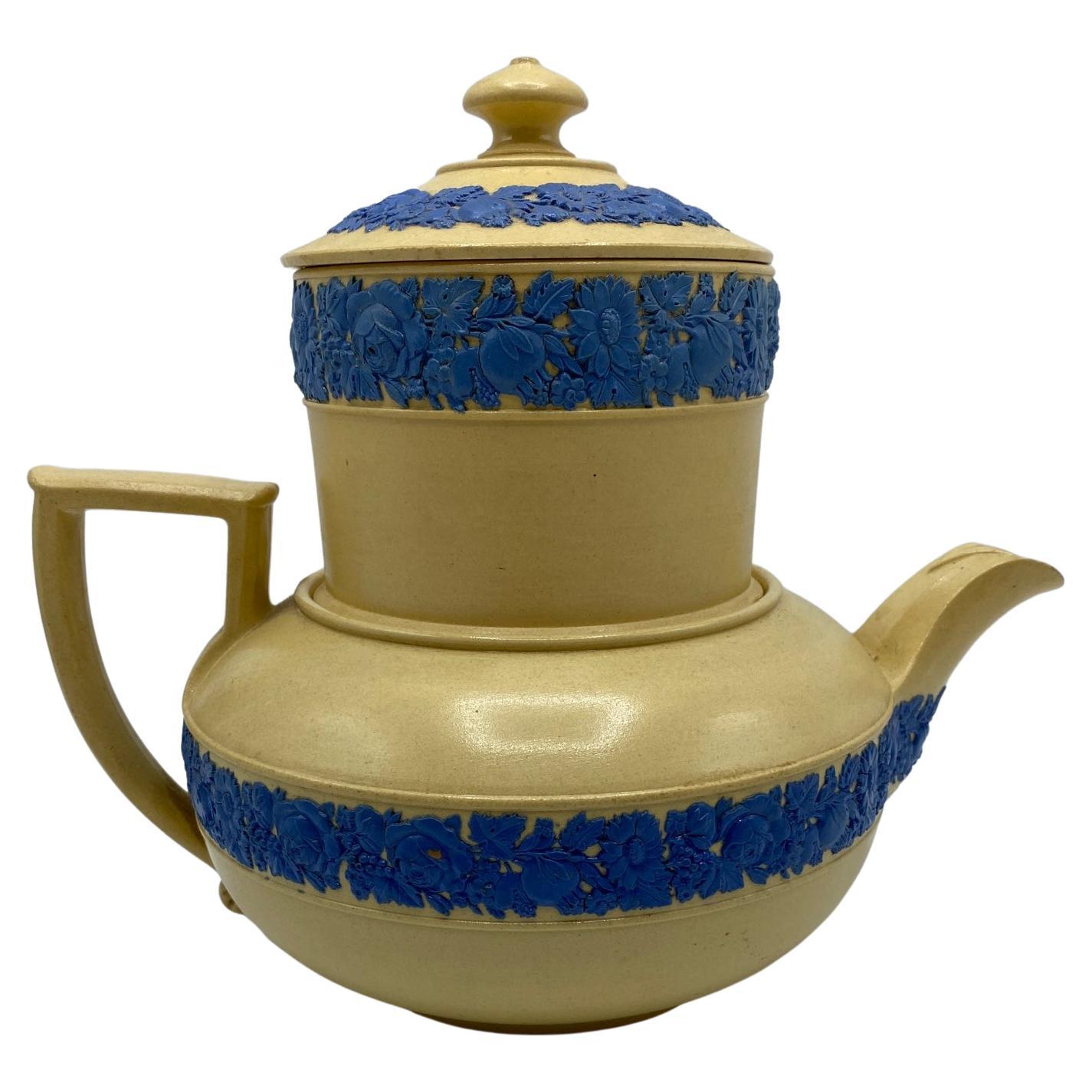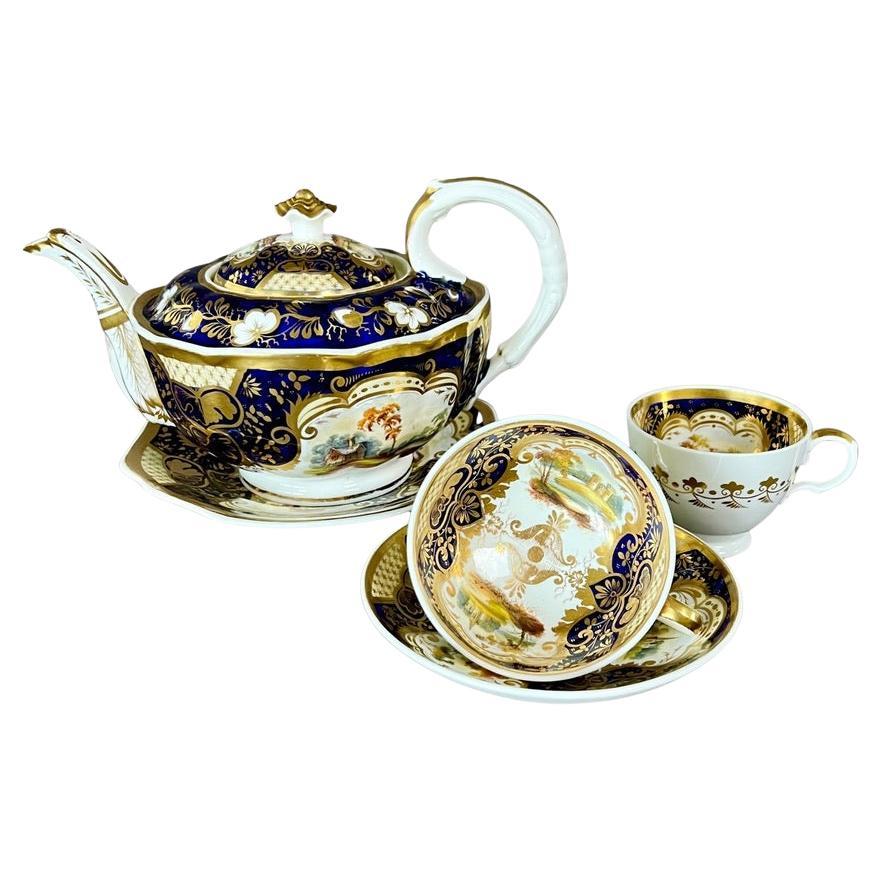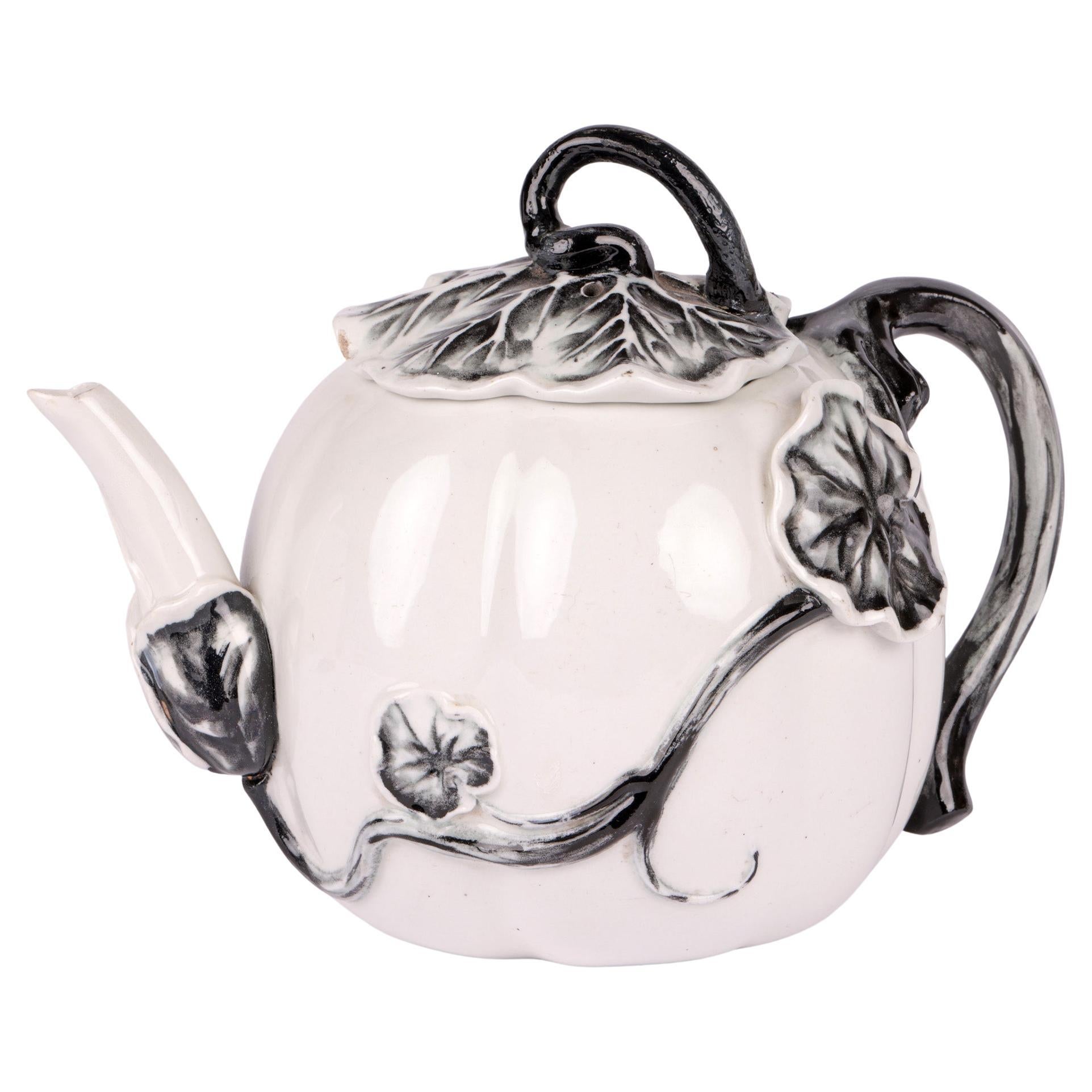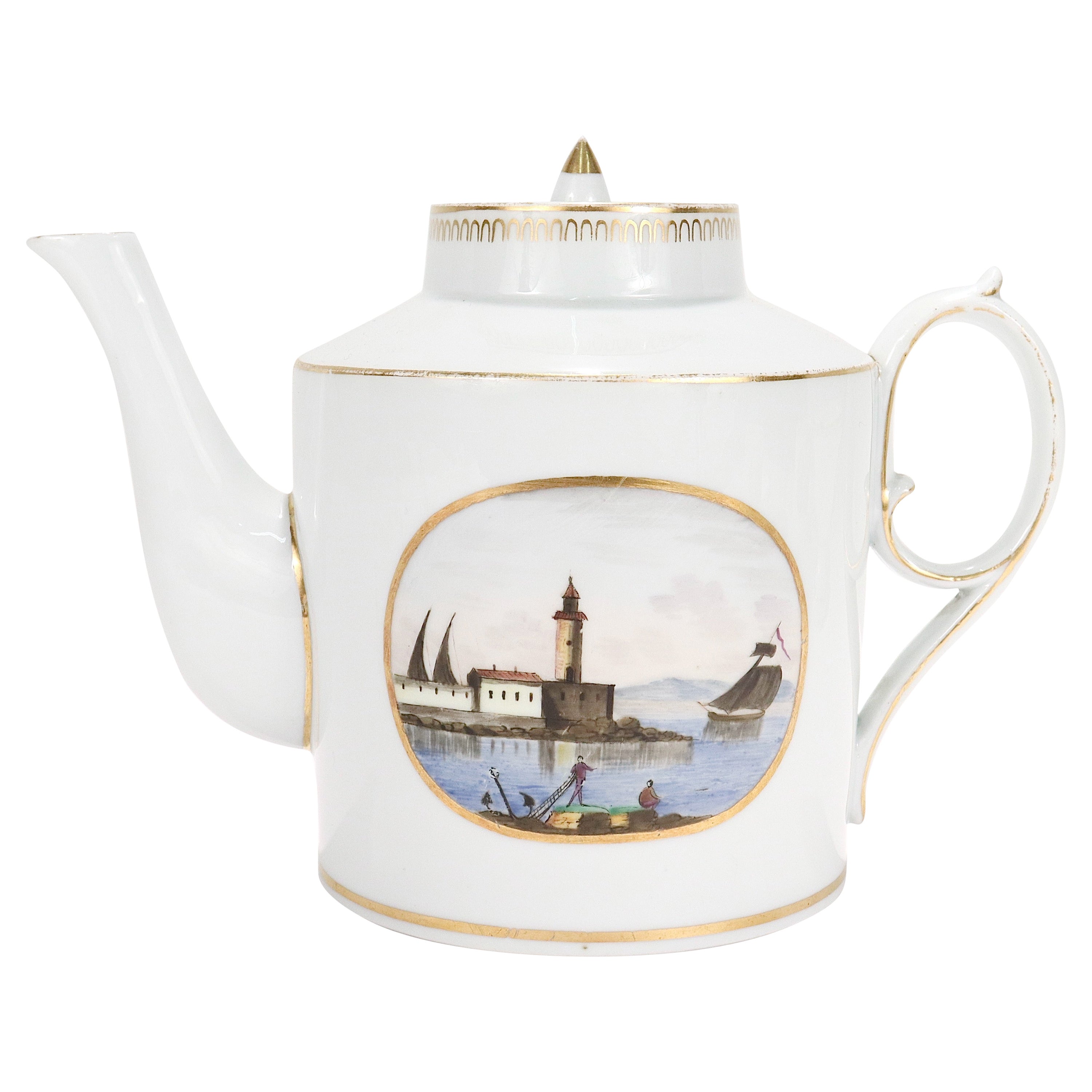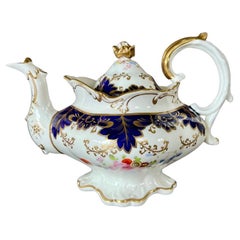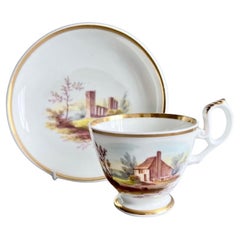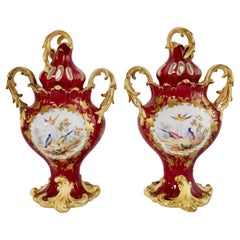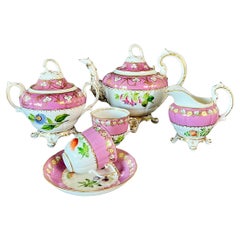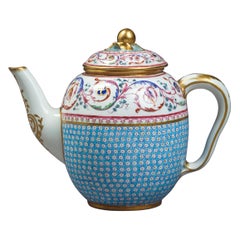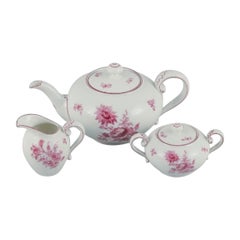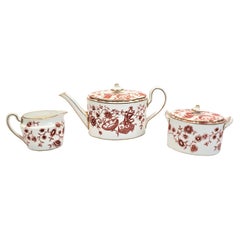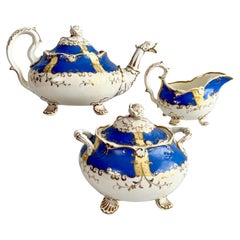
H & R Daniel Porcelain Teapot Set, Royal Blue and Gilt, Rococo Revival, 1831
View Similar Items
Want more images or videos?
Request additional images or videos from the seller
1 of 17
H & R Daniel Porcelain Teapot Set, Royal Blue and Gilt, Rococo Revival, 1831
$1,675List Priceper set
About the Item
- Creator:H&R Daniel (Maker)
- Dimensions:Height: 1 in (2.54 cm)Diameter: 1 in (2.54 cm)
- Sold As:Set of 5
- Style:Rococo Revival (Of the Period)
- Materials and Techniques:
- Place of Origin:
- Period:
- Date of Manufacture:circa 1831
- Condition:Repaired: One of the teapot feet has been invisibly stuck back. Wear consistent with age and use. In good and fully usable antique condition; teapot foot repaired and some crazing but excellent for use.
- Seller Location:London, GB
- Reference Number:Seller: A-DAN591stDibs: LU4805130816422
About the Seller
5.0
Gold Seller
Premium sellers maintaining a 4.3+ rating and 24-hour response times
Established in 2016
1stDibs seller since 2019
225 sales on 1stDibs
Authenticity Guarantee
In the unlikely event there’s an issue with an item’s authenticity, contact us within 1 year for a full refund. DetailsMoney-Back Guarantee
If your item is not as described, is damaged in transit, or does not arrive, contact us within 7 days for a full refund. Details24-Hour Cancellation
You have a 24-hour grace period in which to reconsider your purchase, with no questions asked.Vetted Professional Sellers
Our world-class sellers must adhere to strict standards for service and quality, maintaining the integrity of our listings.Price-Match Guarantee
If you find that a seller listed the same item for a lower price elsewhere, we’ll match it.Trusted Global Delivery
Our best-in-class carrier network provides specialized shipping options worldwide, including custom delivery.More From This Seller
View AllSamuel Alcock Porcelain Teapot, Blue, Gilt and Flowers, Rococo Revival ca 1837
By Samuel Alcock & Co.
Located in London, GB
A teapot with cover in the “rustic bean” shape, cobalt blue ground with gilt acanthus motif and finely painted flower posies on the belly of the teapot
Pattern 5782
Year: ca 1837
Si...
Category
Antique 1830s English Rococo Revival Tea Sets
Materials
Porcelain
$600 Sale Price
20% Off
Free Shipping
H&R Daniel Coffee Cup Duo, Plain Shape, White with Landscape, 1825-1830
By H&R Daniel
Located in London, GB
This is an extremely rare and beautiful coffee cup and saucer made by H&R Daniel some time between 1825 and 1830. The set is potted in the "plain" shape and bears pattern no. 4652 wi...
Category
Antique 1820s English Rococo Revival Tea Sets
Materials
Porcelain
$368 Sale Price / set
20% Off
Free Shipping
H&R Daniel Pair of Potpourri Vases, Maroon, Birds, Flowers, Rococo Revival c1840
By H&R Daniel
Located in London, GB
On offer is a stunning pair of potpourri vases with covers made by H&R Daniel in about 1840. The vases are in the Rococo Revival style, and have a deep maroon ground and reserves wit...
Category
Antique 1840s English Rococo Revival Vases
Materials
Porcelain
$2,360 Sale Price / set
25% Off
Samuel Alcock Matched Solitaire Porcelain Tea Set, Pink with Flowers, ca 1836
By Samuel Alcock & Co.
Located in London, GB
A matched solitaire tea set consisting of a teapot with cover, a sucrier with cover, a milk jug and a matched trio consisting of a teacup, a coffee cup and a saucer. With pink ground...
Category
Antique 1830s English Rococo Revival Tea Sets
Materials
Porcelain
$1,120 Sale Price / set
20% Off
Free Shipping
Samuel Alcock Porcelain Solitaire Tea Set, Cobalt Blue, Gilt, Landscapes, ca1825
By Samuel Alcock & Co.
Located in London, GB
A solitaire tea set consisting of a teapot with cover on a stand and a trio consisting of a teacup, a coffee cup and a saucer, in “half orange” shape with deep cobalt blue and yellow...
Category
Antique 1820s English Regency Tea Sets
Materials
Porcelain
$1,012 Sale Price / set
20% Off
Free Shipping
Caughley Porcelain Teapot, Pink Floral Compagnie des Indes, ca 1785
By Caughley Porcelain
Located in London, GB
This is a beautiful teapot made by Caughley around 1785, decorated with the "Compagnie des Indes" pattern with bold pink flower sprays and a pink s...
Category
Antique 1780s English George III Porcelain
Materials
Porcelain
$876 Sale Price / set
20% Off
Free Shipping
You May Also Like
Berlin KPM Porcelain Five-Piece Cobalt-Blue and Parcel-Gilt Coffee Set
By Kerafina Royal Porzellan KPM
Located in Los Angeles, CA
A very fine 19th century Berlin KPM Porcelain Royal five-piece cobalt-blue and 24-carat gold parcel-gilt coffee set. The finely painted and decorated two-serving suite comprising of ...
Category
Antique Late 19th Century German Empire Revival Tea Sets
Materials
Porcelain
$4,850 Sale Price / set
35% Off
Sevres Sky Blue Ground Porcelain Teapot and Cover, Dated 1785
Located in New York, NY
Painter: Vincent Taillandier (1753-90). Gilder; Boileau Le Jeune (1783-89).
Category
Antique 1750s Tea Sets
Materials
Porcelain
Rosenthal, Porcelain Tea Set Consisting of Teapot, Creamer and Sugar Bowl
Located in København, Copenhagen
Rosenthal, a porcelain tea set consisting of teapot, creamer and sugar bowl.
Hand-painted with purple flowers.
1920/30s.
In perfect condition...
Category
Vintage 1920s German Porcelain
Materials
Porcelain
Antique Royal Crown Derby Chinoiserie Styled Teapot, Cream & Sugar Set
By Royal Crown Derby Porcelain
Located in Hamilton, Ontario
This teapot and cream and sugar set were made by the well known Royal Crown Derby maker of England and dates to approximately 1850 and done in the period Chinoiserie style. The set i...
Category
Antique Mid-19th Century English Chinoiserie Tea Sets
Materials
Porcelain
Early 19th Century Wedgwood Porcelain Biggin Teapot with Blue Glazed Accents
By Wedgwood
Located in Middleburg, VA
1820 Wedgwood Biggin teapot. Dating to the 1820s this is a spectacular and elegant biggin. This is named for Mr. Biggin, who developed the form in 1817. Biggins can be used as teapots or coffee pot, with the upper part holding tea leaves or coffee grounds and having two perforated strainers through which boiling water is poured. The lid has a small round button handle with a hole in the center to vent steam.
Wedgwood decorated the lid, upper section and lower body with applied blue glaze, finely detailed floral bands. The body design is the same Wedgwood used...
Category
Antique Early 19th Century English Porcelain
Materials
Porcelain
Worcester Rare Porcelain Melon Shaped Teapot & Cover
By Royal Worcester
Located in Bishop's Stortford, Hertfordshire
A rare antique Worcester porcelain melon shaped teapot and cover dating from around 1880. The teapot is of round melon shape and applied in relief with trailing leafy stems with a fu...
Category
Antique 1880s English Victorian Porcelain
Materials
Porcelain
